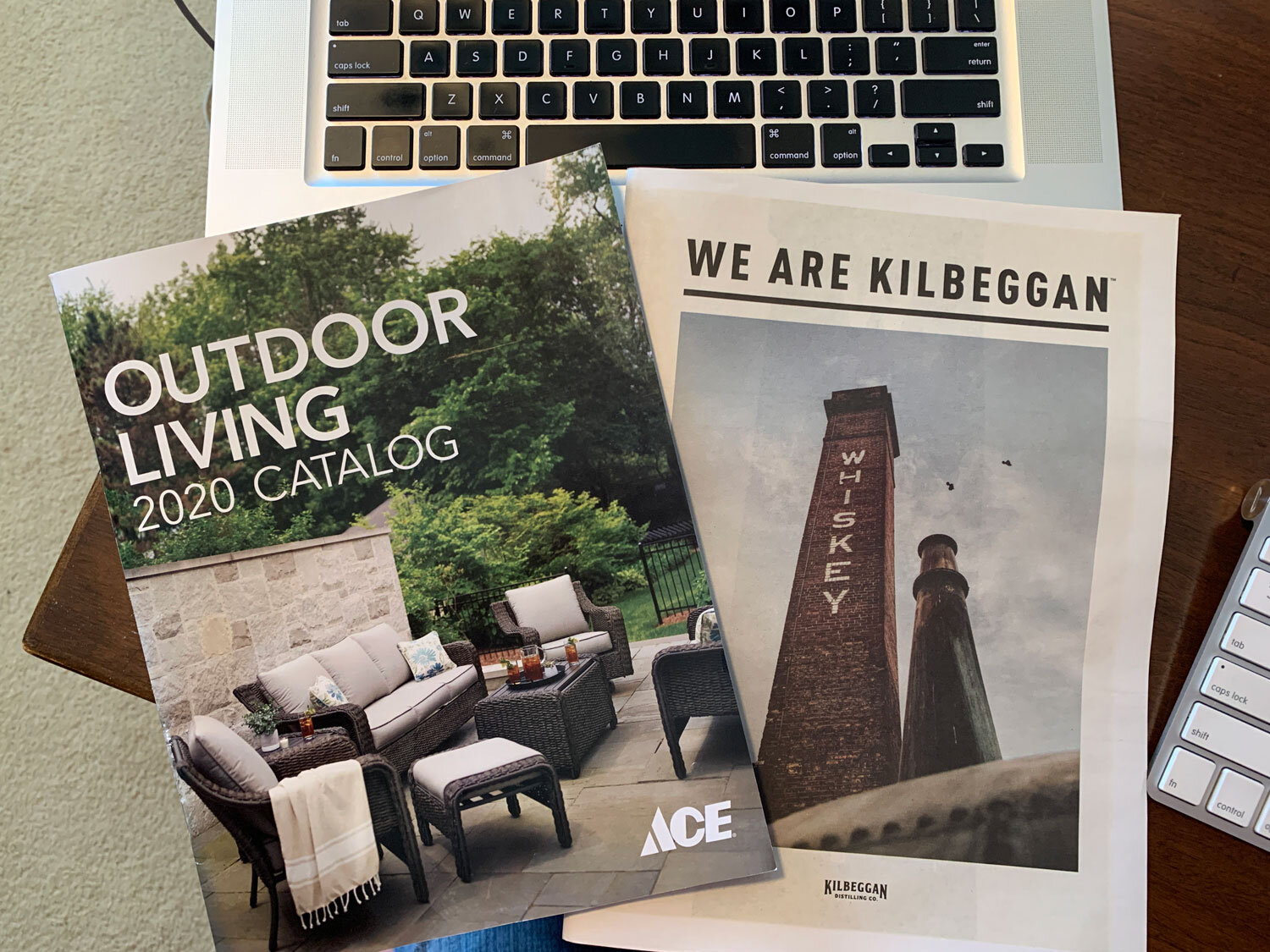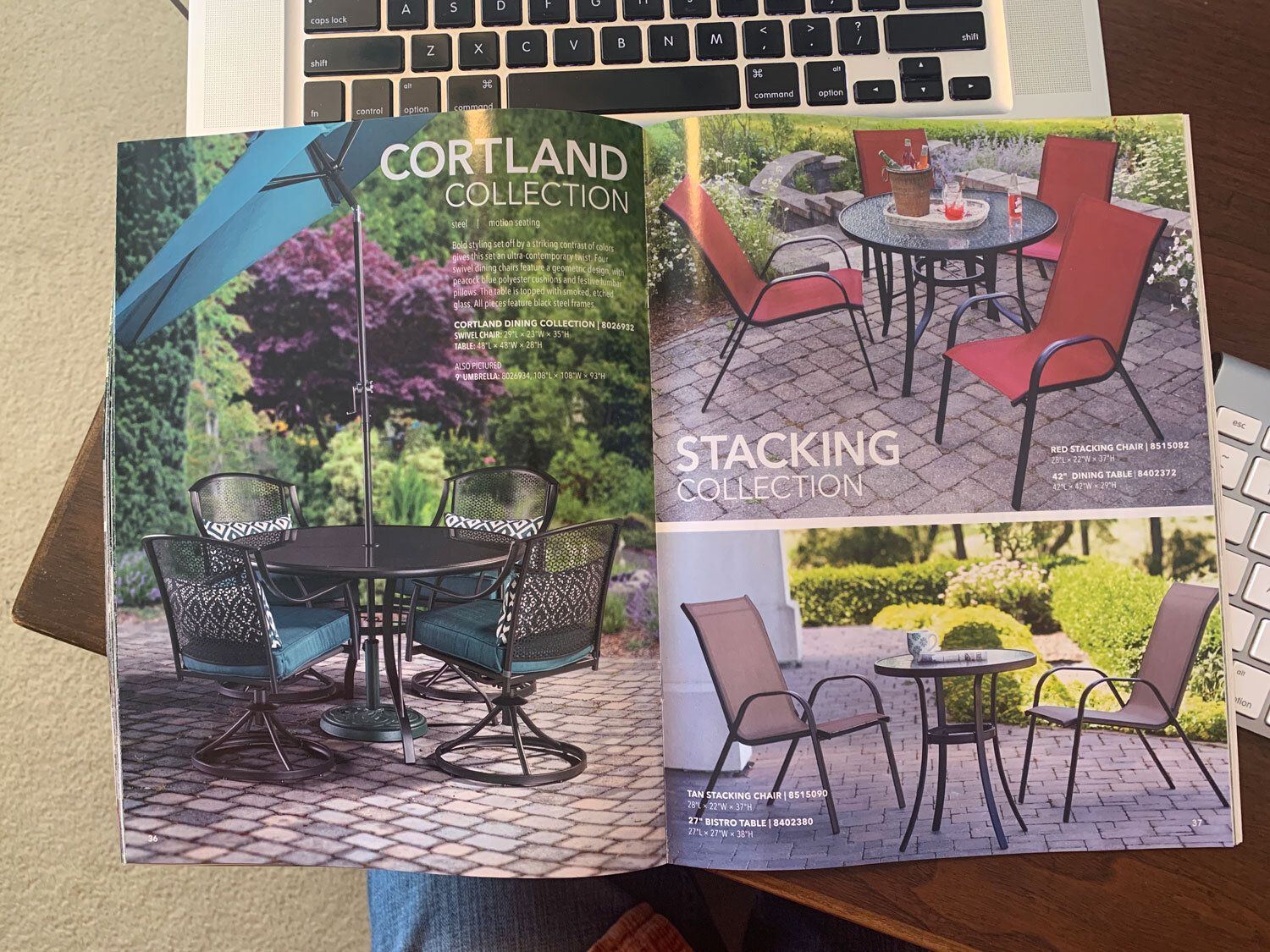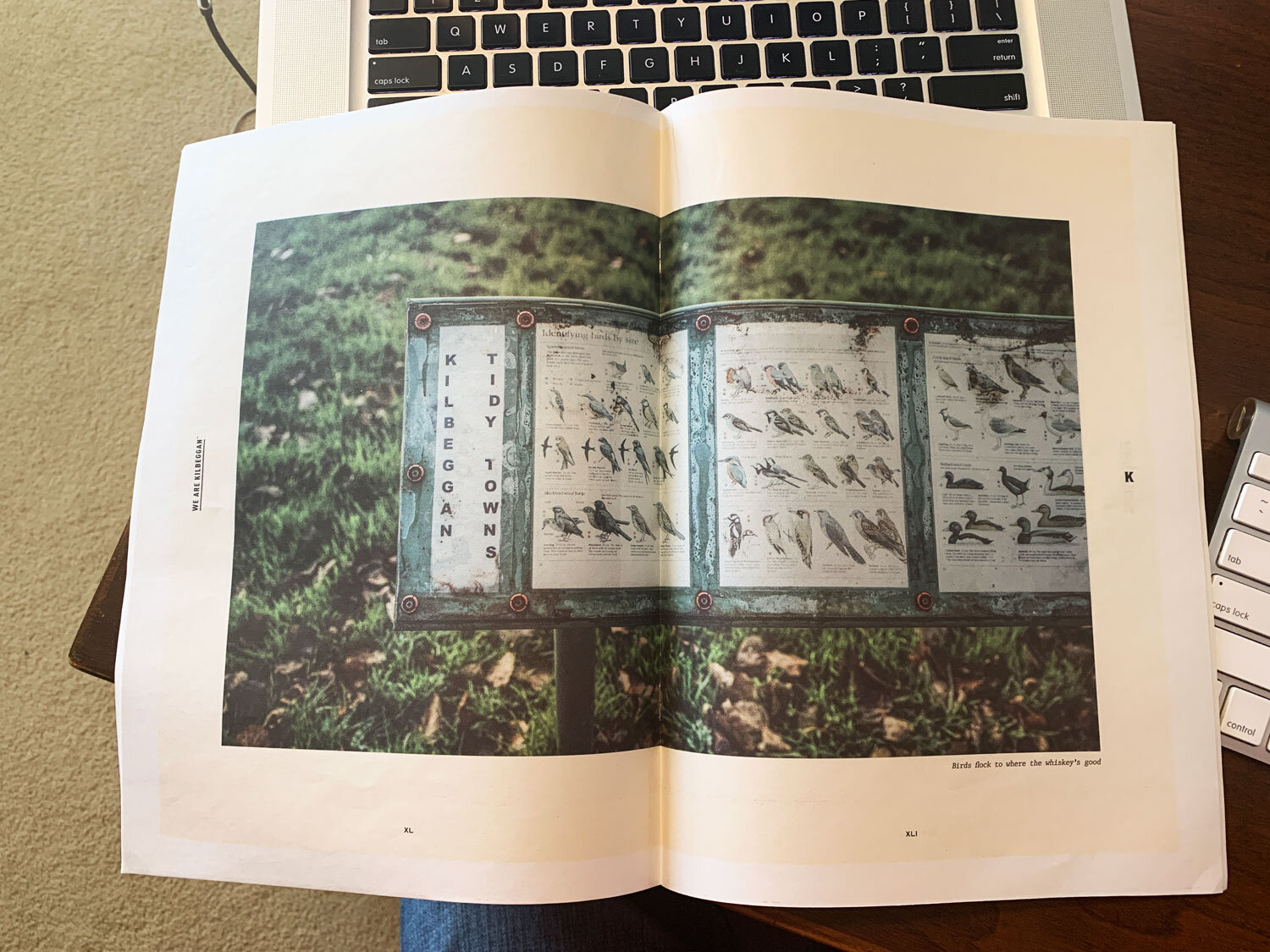A Tale of 2 Catalogs
I always grab a catalog; I’m that guy. Too often, however, these print pieces disappoint me. Why? Because many of them are not made for me. Many of today’s print catalogs are made for salespeople, not for customers. That’s a problem.
I picked up two catalogs recently that help me show what I mean. Each of these is about 80 pages, and each one features color product photos. The similarities end there. One of these is printed on glossy coated paper; its sheen makes the “Outdoor Living” cover headline even more inviting. The second catalog is made of newsprint, and the grainy cover image shows an old brick smokestack with “WHISKEY” painted on it.



Both images have appeal. Outdoor living is a popular design trend and furniture sales are booming. Whiskey might be an even faster-growing business right now. (Hang on, media idea here: Outdoor Whiskey Illustrated. Sorry, focus.) Both cover images have consumer appeal, but the glossy one is visually more enticing.
Catalogs are like people; what’s inside matters more than the wrapper. Here is where the newsprint piece turns from warty frog into handsome prince. In 80 pages of low-grade paper, this catalog shares stories of the people and the land responsible for Kilbeggan Whiskey. Kitty Flynn, Kilbeggan’s town historian, recounts the town’s rebirth. Frank Keoghan tells a story about his father John, distillery worker in the 1940s.
The whiskey catalog’s photos depict the area’s people, shops and pubs. In its 80 pages, this catalog shows 4 pages of product information. The other 76 are interesting, entertaining, educational, and emotional storytelling pages. And the book includes a single page of cocktail recipes – I’d have included a couple more pages – to help readers enjoy a proper whiskey cocktail while reading.
That’s the thing. I want to read this catalog, keep it, share it with my whiskey friends.
And here is where the glossy-covered book fails – there is nothing of interest inside, just more glossy photos of outdoor furniture. The entire 72-page catalog is pictures of chairs and tables, with measurement specs and part numbers. What’s even more interesting (or less interesting?), real people are shown on just one photo spread. Many photos show evidence of people – lit fire pits, icy beverages, full snack trays, but no actual humans. This catalog can serve only as a reference book for sales people; I see no other value to it. And I’m currently shopping for outdoor furniture. Still, I’m tossing this photo collection into the recycling bin midway through writing this – I’m not sharing this one with my outdoor living friends.
The moral of this story? Here are five.
Make your marketing for other people.
Create work that people want to keep or share with friends.
The depth of information you share matters more than its appearance.
Everything you do tells a story, even the less-appealing things (especially those).
Good content marketing requires big plans, not big budgets.
